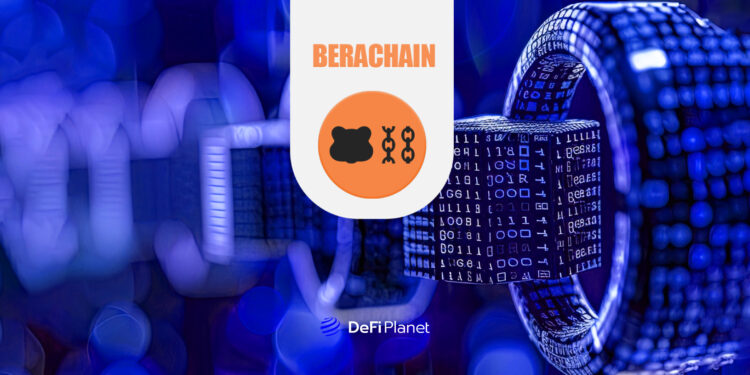Last updated on May 27th, 2025 at 01:17 pm
Most blockchains struggle to balance security, speed, and decentralization. Many are either too slow and expensive or too centralized, handing too much power to a few dominant players. This makes it difficult for developers to build efficient apps and for users to enjoy a seamless experience.
Proof-of-Stake (PoS) blockchains aim to address these issues, but they often favour large token holders, making governance skewed and decision-making less democratic. Liquidity is another major concern—funds often get siloed within ecosystems, making it harder to move assets around and reducing overall efficiency.
Berachain was created by three pseudonymous developers to tackle these problems. It introduces a novel consensus mechanism called Proof-of-Liquidity (PoL), which rewards users for providing liquidity while maintaining high performance and decentralization. This approach makes it easier for developers to build, users to interact, and liquidity to circulate—creating a more efficient and sustainable blockchain environment.
How Berachain Works
Berachain is a high-performance Layer 1 blockchain built for full compatibility with Ethereum-based applications. It runs on BeaconKit, a modular framework designed for EVM-compatible chains. This allows the blockchain to integrate with Ethereum tools and smart contracts seamlessly. Developers can build and deploy dApps as they would on Ethereum, but with greater efficiency, lower costs, and improved liquidity handling.
Its Proof-of-Liquidity (PoL) system is an upgraded take on PoS. Rather than simply staking tokens to secure the network, PoL incorporates liquidity provision into the network’s consensus process. This means that unlike traditional PoS systems, where only token holders have stakes, Berachain enables liquidity providers to participate in consensus.
Users supply liquidity to protocols like BEX (Berachain Exchange) and receive receipt tokens as proof of their contribution. These receipt tokens can be staked in Reward Vaults, allowing users to earn $BGT rewards proportional to their stake in the vault.
Berachain uses a two-token model:
- $BERA – the gas token used to pay for transactions.
- $BGT – the governance token that plays a central role in consensus and delegation.
Validators secure the network by staking $BERA. To qualify, a validator must stake between 250,000 and 10,000,000 $BERA. The top validators by stake enter the Active Set, and the more $BERA they commit, the higher their chances of proposing new blocks and earning rewards.
However, rewards are paid in $BGT, not $BERA. A validator’s Boost—based on how much $BGT is delegated to them—affects how much $BGT they earn. This creates a cycle of aligned incentives: validators compete for delegation, while delegators benefit from increased emissions.
Holders of $BGT can delegate to validators to boost their influence and share in rewards. This design encourages broader participation, where liquidity provision, staking, and governance work together to enhance both security and efficiency.
What Berachain Brings to the Crypto Ecosystem
Most PoS chains reward validators based solely on token holdings. This benefits large investors, who can dominate the network and earn compounding rewards. Smaller users have limited influence and fewer opportunities to participate meaningfully.
Berachain addresses this imbalance by valuing liquidity provision in addition to token staking. Instead of locking tokens in idle staking, users can deploy assets productively—supporting network security and earning rewards at the same time. This approach discourages centralisation and promotes more active, community-driven participation.
Increased Liquidity Across DeFi
DeFi suffers from liquidity fragmentation—funds often get stuck in separate protocols or ecosystems, limiting their utility. When assets are tied up in staking or siloed in closed networks, they can’t be used for trading, lending, or other use cases. This leads to inefficiencies and stifles innovation.
Berachain solves this by making liquidity a core part of its security architecture. Users who provide liquidity continue to participate in network rewards, keeping funds active and circulating. This helps DeFi applications operate more smoothly, with fewer liquidity shortages and better capital efficiency.
Fairer Validator Incentives
In many PoS systems, power is concentrated among the wealthiest validators. The more tokens they hold, the more they earn—creating a feedback loop that sidelines smaller players.
Berachain rebalances this dynamic using the $BGT governance token. Through delegation, users can amplify the influence of validators they support, regardless of the validator’s personal token holdings. This allows even smaller participants to shape governance and secure rewards, encouraging a more diverse and decentralized validator set.
Better Alignment Between Users and Developers
A common issue in crypto ecosystems is misaligned incentives. Users want low fees and fast transactions. Developers need funding and liquidity. Validators focus on maximising rewards. When these goals conflict, networks can become inefficient and user-hostile.
Berachain addresses this by building incentives that reward ecosystem participation. Validators benefit more when the network grows. Developers gain from accessible liquidity and a robust user base. Users enjoy better financial services and earn by contributing to liquidity. The result is a more cohesive, sustainable ecosystem that prioritises long-term engagement over short-term speculation.
A Stronger, More Efficient DeFi Ecosystem
The blockchain trilemma—balancing security, decentralization, and usability—remains unsolved for many networks. Too much decentralization can lead to slowness and high costs. Too much centralisation risks censorship and governance failures.
Berachain’s PoL model offers a compelling middle ground. By making liquidity a pillar of security, it keeps fees low, speeds high, and participation broad. Developers benefit from EVM compatibility, allowing them to build with familiar tools. And users benefit from a network optimised for capital efficiency and real-world utility.
Challenges and Potential Obstacles
Despite its innovations, Berachain faces significant challenges on the road to mainstream adoption.
1. Maintaining Economic Balance
Berachain’s PoL model relies on incentivised liquidity, but rewards must be carefully calibrated. If they’re too generous, the system risks inflation and economic instability. If it is too modest, users may lack the motivation to participate. Long-term sustainability will depend on managing this balance as adoption scales.
RELATED: The Dark Side of Crypto Incentives: How They Fuel Fraud and Unsustainability
2. Scaling Without Compromise
As user demand grows, Berachain must maintain speed and affordability. Users may switch to more scalable alternatives if the network becomes congested or transaction fees spike. Efficient scaling—without compromising decentralization—will be critical.
3. Competing in a Crowded Market
Berachain enters a market dominated by chains like Ethereum, Solana, and Avalanche, each with established ecosystems. To gain market share, Berachain must offer clear, differentiated advantages—whether in developer tools, user experience, or liquidity efficiency.
A blockchain’s success hinges on network effects. Without a strong developer community and active users, even the most advanced tech can fade into irrelevance. Building a vibrant ecosystem is essential.
4. Navigating Regulatory Uncertainty
The legal landscape for crypto is still evolving. Berachain’s PoL model introduces new mechanics that may face scrutiny, particularly in jurisdictions uncertain about staking, yield-generating products, or liquidity mining. Adverse regulation could force protocol changes and slow momentum.
Evaluating Berachain’s Prospects
Berachain’s mainnet officially launched on February 6, 2025, with so much fanfare, which is expected. Its Proof-of-Liquidity model presents strong incentives, but long-term success depends on finding the right reward equilibrium. If incentives trigger high inflation, the token value could erode. If participation drops due to low rewards, network security may weaken.
Adoption is key. Without traction from developers and users, the ecosystem won’t grow. At the same time, security risks—like protocol exploits or liquidity shocks—could damage trust. Regulatory headwinds might also affect staking models and DeFi integrations, forcing the team to adapt.
Finally, performance matters. If Berachain can remain fast, affordable, and developer-friendly as usage rises, it stands a chance at carving out its place in the L1 space. But success isn’t guaranteed—it will depend on how well the protocol scales, attracts adoption and stays resilient in a highly competitive and regulated environment.
Disclaimer: This article is intended solely for informational purposes and should not be considered trading or investment advice. Nothing herein should be construed as financial, legal, or tax advice. Trading or investing in cryptocurrencies carries a considerable risk of financial loss. Always conduct due diligence.
If you would like to read more articles like this, visit DeFi Planet and follow us on Twitter, LinkedIn, Facebook, Instagram, and CoinMarketCap Community.
Take control of your crypto portfolio with MARKETS PRO, DeFi Planet’s suite of analytics tools.”





















